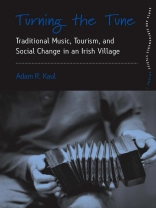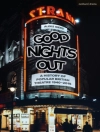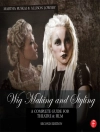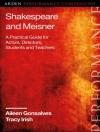The last century has seen radical social changes in Ireland, which have impacted all aspects of local life but none more so than traditional Irish music, an increasingly important identity marker both in Ireland and abroad. The author focuses on a small village in County Clare, which became a kind of pilgrimage site for those interested in experiencing traditional music. He begins by tracing its historical development from the days prior to the influx of visitors, through a period called 'the Revival, ’ in which traditional Irish music was revitalized and transformed, to the modern period, which is dominated by tourism. A large number of incomers, locally known as 'blow-ins, ’ have moved to the area, and the traditional Irish music is now largely performed and passed on by them. This fine-grained ethnographic study explores the commercialization of music and culture, the touristic consolidation and consumption of “place, ” and offers a critique of the trope of 'authenticity, ’ all in a setting of dramatic social change in which the movement of people is constant.
Spis treści
Chapter 1. Introduction
- Conceptual Orientation
- Conceptual Organization
- Doolin
PART I: REMEMBERED HISTORY
Chapter 2. The Old Days
- Ethnography, History and Memory
- Subsistence and Seasonality
- Argonauts of the Eastern Atlantic
- Seasonality Tourism in Clare in 1859
- (On the Origins of a New Species)
- Traditional Irish Music of the “Old Days”
- The Céilí and the Crossroads Dance
- The Country House Dance
- The Dance Halls and The Céilí Bands
- Early Collections and Early Sessions
- Conclusions
Chapter 3. The Revival
- A Changing Economy
- The Folk Revival
- Internal Changes in Irish Music
- The Revival Arrives
- Turning the Tune
- Conclusions
PART II: MOVING IN AND MOVING THROUGH
Chapter 4. The Celtic Tiger
- Celtic Tourism
- Mass Tourists
- Coach Tours
- “Travelers”, Working Tourists, and Visitors
- Conclusions
Chapter 5. Locals and Blow-ins
- Locals
- Blow-ins
- Negotiations of Belonging
- Conclusions
PART III: CHANGE AND CONTINUITY
Chapter 6. Consolidation and Globalization
- Traditional Music of the Celtic Tiger
- Doolin’s Celtic Music Industry
- Bands and Sessions, Performing and Playing
- Paying to Play
- Conclusions
Chapter 7. Adoption and Approriation
- Appropriation
- Adoption
- Complementary Discourses
- Phenomenology of the Session
- Premeditated Spontaneity
- Music as a Conversation
- Perfect Embodiment and Good Craic
- Conclusions
Chapter 8. Conclusions
- History, Globalization, and Tourism
- Appropriation, Tradition, and Cosmopolitanism
- The Trope of Authenticity
- Credibility
- One’s Relationship to the Locale
- One’s Epistemological Relationship to the Music
- Immediate Context
- Seasonality
- The Interaction of Personalities
- Good Man, Yourself
Bibliography
Index
O autorze
Adam Kaul is a Professor of Anthropology at Augustana College in Rock Island, Illinois. He has written extensively on traditional music, tourism, and the economics of musical performance in Ireland. He is also the co-editor of Leisure and Death (University Press of Colorado 2018) and co-editor of the 3rd edition of Tourists and Tourism (Waveland 2018).












